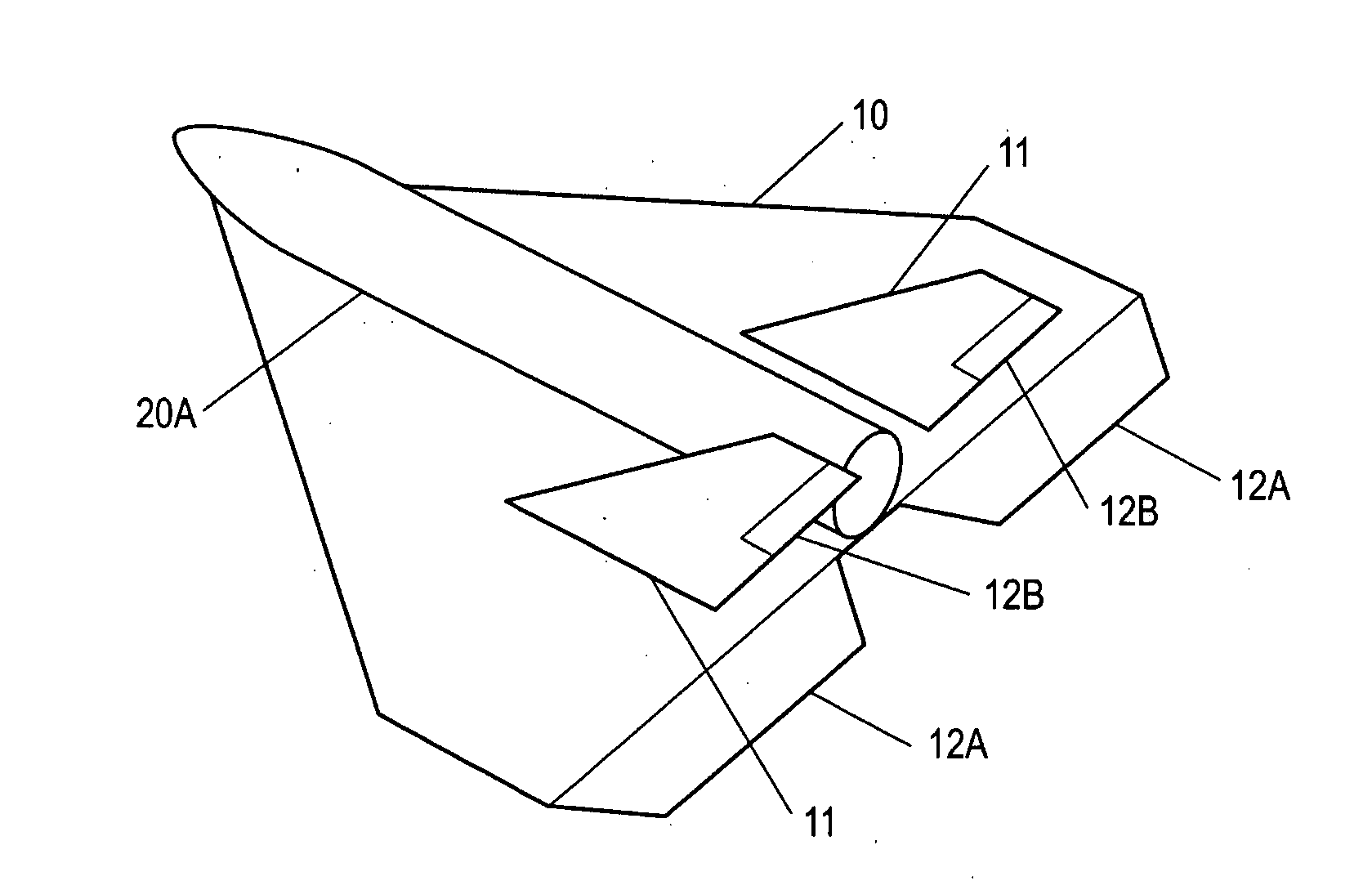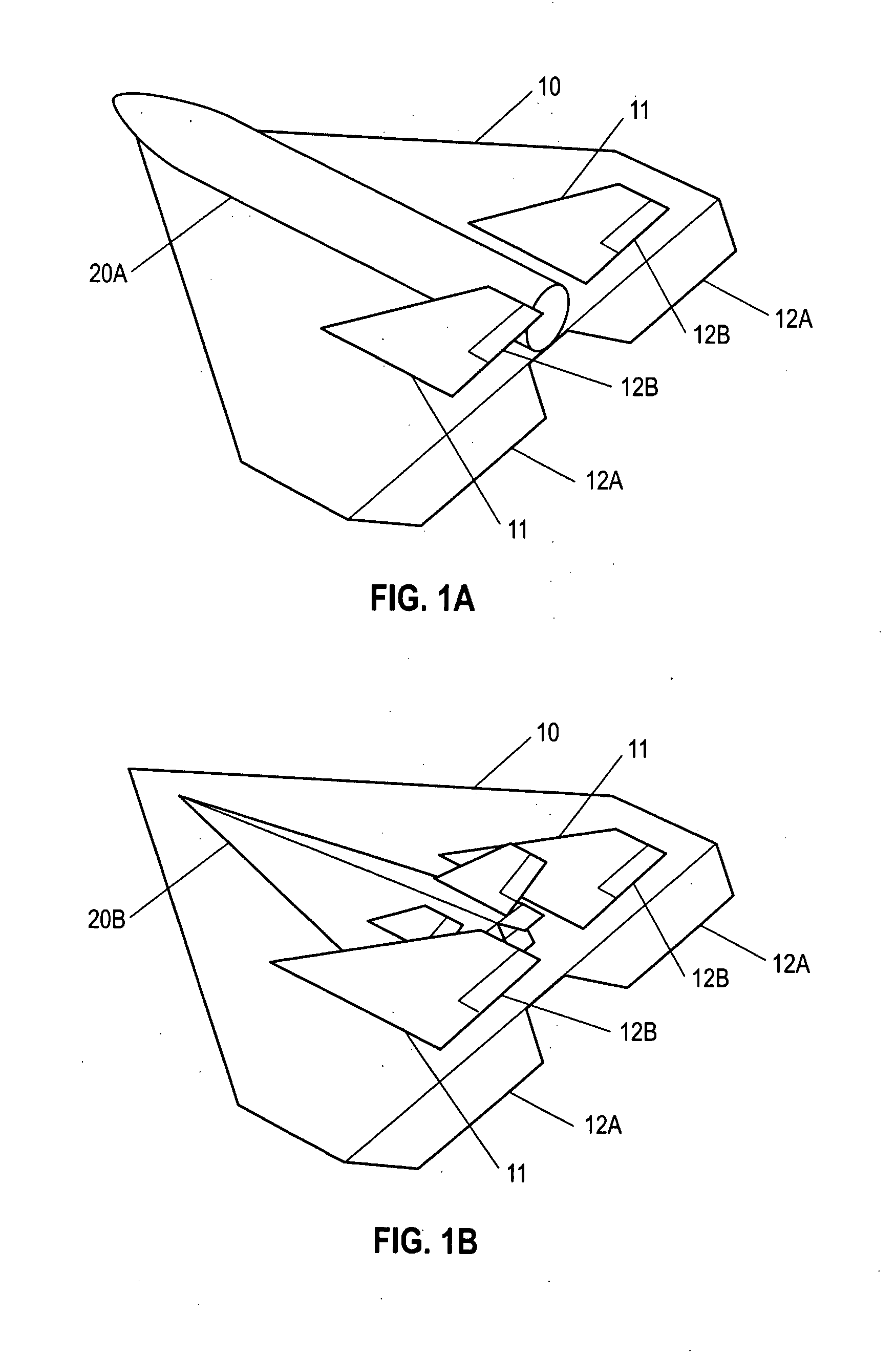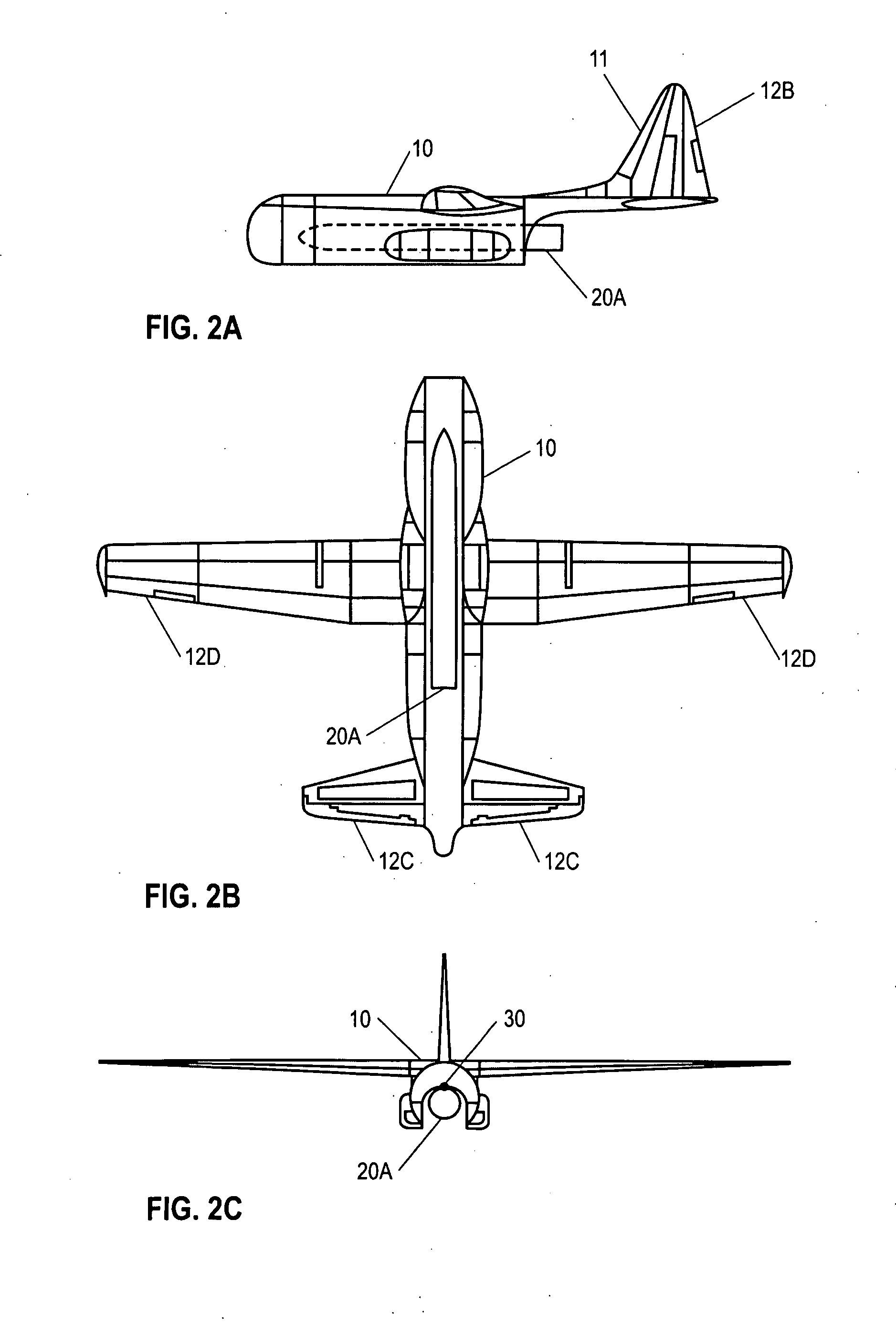Non-powered, aero-assisted pre-stage for ballistic rockets and aero-assisted flight vehicles
- Summary
- Abstract
- Description
- Claims
- Application Information
AI Technical Summary
Benefits of technology
Problems solved by technology
Method used
Image
Examples
first embodiment
Operation—First Embodiment in Conjunction with Ballistic Rocket
[0040]Operation of first embodiment is as follows. The NAP-vehicle stack is placed on the runway. The engine of the rocket is ignited, the NAP-vehicle stack rolls-out (i.e., accelerates along the horizontal runway to take-off speed), takes off, and climbs to the separation point using propulsion from rocket. During this phase, control surfaces of the NAP are used for flight control in a conventional manner.
[0041]At the separation point, which may be at attitude of a few hundred meters, the hold-and-release mechanism separates vehicle 20A from NAP 10. After separation, NAP 10 makes a 180-degree turn, and glides back to the launch site for subsequent reuse or disposal. Vehicle 20A then proceeds along its ascent trajectory in conventional fashion.
Second Embodiment—Custom Designed NAP as a Pre-Stage of a Spaceplane—FIG. 1B
[0042]FIG. 1B shows a second embodiment of NAP 10 implemented as a custom-designed delta-wing glider to ...
second embodiment
Operation—Second Embodiment in Conjunction with Spaceplane
[0046]Operation of the second embodiment of FIG. 1B with the spaceplane proceeds in essentially the same fashion as with the ballistic rocket of FIG. 1A. The NAP-vehicle stack is placed on the runway. The engine of the spaceplane is ignited, the NAP-vehicle stack rolls-out, takes off, and climbs to a separation point using propulsion from vehicle. During this phase, control surfaces of the NAP are used for flight control in a conventional manner.
[0047]At the separation point, which may be at altitude of a few hundred meters, the hold-and-release mechanism separates vehicle 20B from NAP 10. After separation, NAP 10 makes a 180-degree turn, and glides back to the launch site for subsequent reuse or disposal thereof. Vehicle 20B then proceeds along its ascent trajectory in conventional fashion.
Third Embodiment, Modification of a Suitable Airplane—FIGS. 2A, 2B, and 2C
[0048]A third embodiment of the NAP is illustrated in FIGS. 2A,...
third embodiment
Operation—Third Embodiment
[0050]Operation of the third embodiment is similar to that of the first embodiment. The stack rolls-out on a conventional runway, takes off, and climbs to the separation point in a fashion conceptually identical to those of the first and second embodiments. At the separation point, hold-and-release mechanism 30 releases rocket 20A from NAP 10 and the NAP proceeds downward. Separation is assisted by the gravity component across the flight path. After separation, the operation proceeds similarly to the operation of the first embodiment: NAP 10 glides back to the launch site for subsequent reuse or disposal, and rocket 20A proceeds along its ascent trajectory in conventional fashion.
Other Embodiments—FIGS. 3A to 3C and 4A to 4C
[0051]A number of embodiments are illustrated ins FIGS. 3A, 3B, and 3C. FIG. 3A is a rear view of the NAP in the form of a delta-wing glider in conjunction with ballistic rocket carried on the upper surface of the NAP; FIG. 3B is a rear ...
PUM
 Login to View More
Login to View More Abstract
Description
Claims
Application Information
 Login to View More
Login to View More - R&D
- Intellectual Property
- Life Sciences
- Materials
- Tech Scout
- Unparalleled Data Quality
- Higher Quality Content
- 60% Fewer Hallucinations
Browse by: Latest US Patents, China's latest patents, Technical Efficacy Thesaurus, Application Domain, Technology Topic, Popular Technical Reports.
© 2025 PatSnap. All rights reserved.Legal|Privacy policy|Modern Slavery Act Transparency Statement|Sitemap|About US| Contact US: help@patsnap.com



